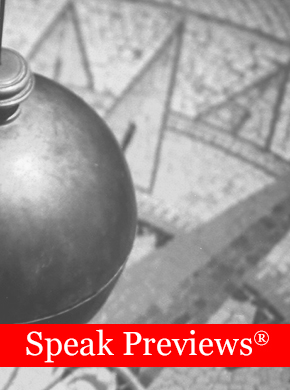In this issue of Speak Previews®, ECG Principal Lynne Howell Wiklander discusses starting points and information selection in Q&A.
How do you know if you are talking to an engineer? When you ask him the time, he tells you how to build a clock.
That old joke points to a communication issue with which many speakers struggle, especially as they form and deliver a response during a Q&A session. Where to begin? How much information is the right amount?
Speakers may perceive a need to give thorough and detailed answers to all questions. Some may consider doing so an obligation to their audience. But the true obligation is to deliver clear, pertinent, understandable responses as concisely as possible in answer to a question.
MITTENS AND VERBAL HANDCUFFS
During Q&A sessions, it may feel empowering to provide a large quantity of in-depth information. It may be a way of showcasing expertise or perhaps of attempting to impress others. But it may also stem from a desire to make sure that listeners appreciate the nuances of a subject or have adequate background and context.
It can be the curse of knowledge, really, this urge to say too much. But it may also be the curse of not understanding an audience's needs.
Receiving too much information frustrates listeners, makes them impatient, lowers their interest. Pertinent, necessary information—such as the answer to a question posed—gets lost in a barrage of words. MITIN, listeners might think: more info than I needed.
And the longer the speaker talks, the tighter the verbal handcuffs become, the more imprisoned the audience feels.
THE DANGER OF OVER-ANSWERING
Oversharing holds other dangers, sometimes opening a Pandora's Box of issues that demand attention even if they are not relevant. The responder then must spend time defusing or explaining those concerns.
Over-answering can also lead to listeners' becoming so distracted by unnecessary detail that they lose sight of the original intent of the question and its answer.
During a recent client budget meeting, for example, a participant asked the purpose of certain marketing support materials. The responder explained that the materials were inexpensive, that green techniques were used to produce them, and that the production volume was low in comparison to similar organizations.
Despite—or because of—this full response, the actual question was not answered. Even worse, the discussion digressed from a line-item budget review into an exchange about the value of alternate mediums for communicating with different audiences.
The meeting was hijacked by the impressively comprehensive but non-answer answer to the question.
FOCUSED LISTENING HELPS FOCUS RESPONSE
The technique of active listening can help you determine the kind and amount of detail or background to include in your response.
First, listen actively to the question, focusing on it completely and consciously to understand its totality, its meaning. Pause before offering a response, and in that pause ask yourself three critical questions:
- What is this questioner actually asking about?
- What is the central message of my response?
- What detail is necessary to make that message clear and comprehensible?
Your answers to these three questions will guide you to an appropriate and concise response.
When somebody asks you the time, tell her the time. If she wants to know how to build a clock, she'll ask.



